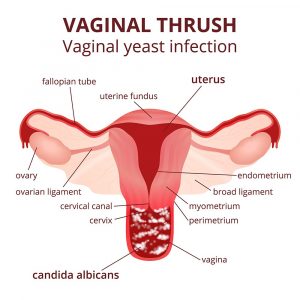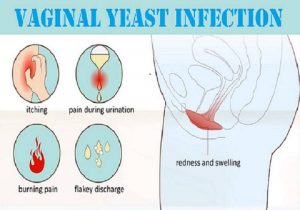Yeast infection is itchy and super uncomfortable, and no one really talks about them, right? Fear not, we’re here to break it down for you.

Though a yeast infection can happen to men, women are more prone to it. Almost 75% of all women suffer from a yeast infection, at least once in their lifetime.
What is a yeast infection, you may ask?
It is also known as Candidiasis. Here’s what happens: A healthy vagina contains bacteria and some yeast cells. But when the balance of bacteria and yeast changes, the yeast cells can multiply. This causes intense itching, swelling, and irritation. A yeast infection isn’t considered a sexually transmitted infection. But, there’s an increased risk of vaginal infection at the time of first regular sexual activity.
What causes a yeast infection?
The fungus Candida is a naturally occurring micro-organism in the vaginal area. Lactobacillus is the bacteria which keeps Candida’s growth in check. But if there’s an imbalance in your system, this bacteria won’t work effectively. This leads to an overgrowth of yeast, which causes the symptoms of yeast infections.
Other factors that can contribute to a yeast infection are:
* Pregnancy
* Lack of sleep
* Stress
* Uncontrolled diabetes
* A weak immune system
* Poor eating habits
* Antibiotics
* Hormonal imbalance

Symptoms of yeast infections
Itchiness and discomfort in the vagina are the main symptoms of it, but there are others:
* Pain or burning when you pee
* Swelling around the vagina
* Redness & soreness that persists
* A thick, white, odourless discharge
* Pain during sexual intercourse
Prevention
To reduce the risk of it, wear underwear that has a cotton crotch and doesn’t fit too tightly.
It might also help to avoid:
* Tight-fitting pantyhose
* Douching, which removes some of the normal bacteria in the vagina that protect you from infection
* Scented feminine products, including bubble bath gel, sanitary pads and tampons
* Unnecessary antibiotic use, such as for colds or other viral infections
* Staying in wet clothes, such as swimsuits or gym/workout attire for extended periods of time
There you have it! We hope this clears your basic doubts about vaginal yeast infections; if you have any more, don’t hesitate to speak to your doctor. The more you know, the better for you. Here’s to staying healthy! Take care.










You have explained all the information about yeast infection which all women need to know. Thanks for sharing useful information with us.